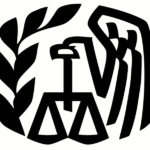Do I have to cure the arrears on the car loan and pay off the claim secured by the car, came the email from the young bankruptcy lawyer.
No: when you pay the claim in a Chapter 13 plan, the arrears on a car loan are not a separate element for payment.
I knew the practical answer, but as I formulated a written answer, the light bulb went on as to why that was so.
Don’t mix apples and oranges, cars and houses, or long term debt with short term debt.
Cure and reinstate
We cure the default on long term debt such as mortgages to reinstate the loan and to bring the loan current by the end of the Chapter 13. Section 1322(b)(5) says that a plan may cure a default on a secured claim where the last payment is due after the last payment under the Chapter 13 plan.
That’s why we don’t have to pay off the mortgage secured by the house within the life of the plan. The right of a plan to provide for cure is echoed in §1322(b) (3).
So, where you expect to keep the house and the lien is not strippable, the plan provides for payment of the arrearages and the on going contractual payments.
Pay allowed secured car claim
We pay the full amount of secured debt where the last payment is due within the life of the plan. §1325(a)(5). This section says to be confirmed, with respect to allowed secured claims, one of the following must happen:
- The secured creditor consents to the treatment of its claim;
- The creditor retains its lien until payment of the contractual amount or discharge; receives the value of the allowed claim; in payments that provide adequate protection; OR
- The debtor surrenders the property.
The amount of the allowed claim depends on whether the vehicle is within the hanging paragraph of 1325(a). If the car is outside the 910 day prohibition on cram down, you pay the value of the car plus interest; if it’s a 910 car, you pay the payoff balance as of filing, plus interest. So in calculating what’s due, the arrears influence what’s owed, but are not paid separately.
Note that if you had a car loan with a final payment due after the last payment on your Chapter 13 plan, there is no bar to treating it as long term debt and reinstating the contract. Whether that is desireable depends on the interest rate on the loan (do you want to preserve a low rate, or exercise your right to the Till rate) and what impact the contractual payment has on the debtor’s budget.
I continue to marvel at how much trying to explain bankruptcy to the less experienced teaches me.
Image courtesy of dannypolicarpo.









How do you calculate adequate protection on a 910 vehicle or the required interest payment when paying the debt inside the plan?
The rule of thumb is that monthly adequate protection is at least 1% of the value of the car.
I use a mortgage amortization calculator to figure what the total interest on the secured claim will be. It’s a guess to figure out how long the period over which you are amortizing the claim is. Most simply you can calculate amortization, assuming you will pay it over the complete life of the plan.
In fact, if the claim is accruing interest, you may want to pay it off sooner to minimize the interest paid. Play with an amortization calculator to see what difference it makes.